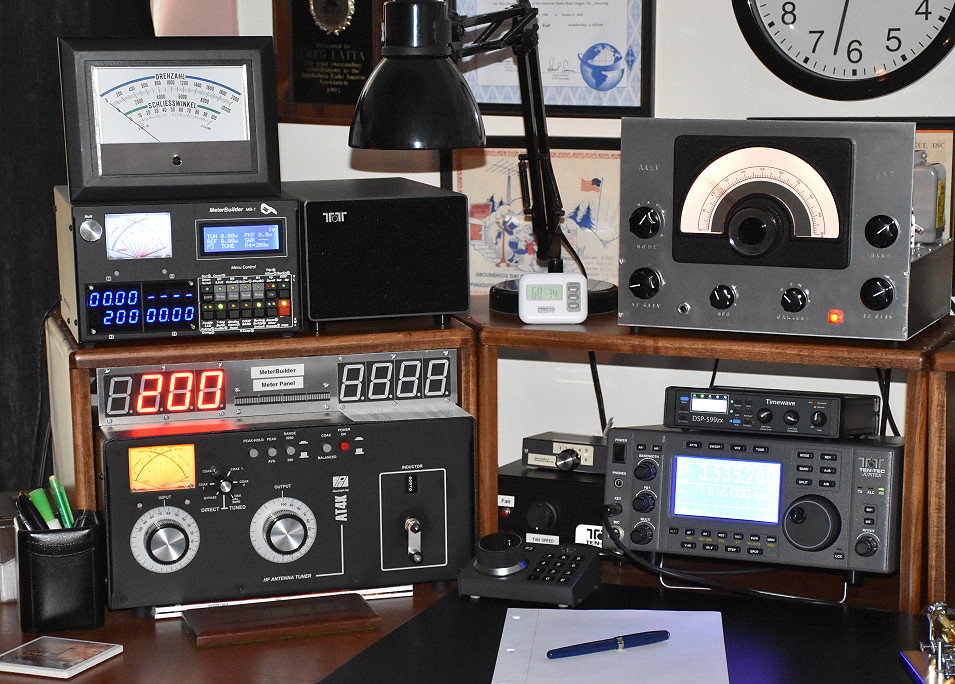
Click on any item in the photo for information on that item, or look in the list below.

<AA8V Station Main Page |
Back to the The AA8V Station Page |
Next Section> |
Introduction:
Section 1 (Left Side of the Photo):
Section1 of the station consists primarily of a MeterBuilder MB-1 digital
sampling wattmeter and its associated analog and digital readouts, and a
Palstar AT4K 2.5kW antenna tuner.
The MeterBuilder MB-1 takes care of just about every
possible monitoring situation, from power and SWR measurement to AM modulation
monitoring. It can also be connected to a remote coupler if necessary to make
measurements anywhere in the station, such as at the input to an
amplifer, without moving the MB-1 itself.
The Palstar antenna tuner takes care of all antenna
switching and antenna impedance matching. The tuner can also be bypassed if
necessary. Any antenna can be selected without connecting or disconnecting any
cables. The tuner can easily handle 2.5kW, which is well in excess of the
output of the Ameritron AL-572 amplifier, which is rated at 1300W output.
Section 2 (Right Side of the Photo):
Section 2 consists of the 6x2 receiver, Timewave DSP Audio Filter, and the
TenTec Jupiter transceiver, along with their associated accessories.
The 6x2 receiver is a 6-tube superheterodyne receiver
designed and built by me. When combined with the Timewave DSP Audio filter it
makes for a great 80m and 40m receiver.
The Timewave DSP Audio filter is an amazing audio
filter that can be used with all of the receivers in the station. It feature
highpass, lowpass, and bandpass modes with digital noise reduction. The minimum
bandwidth in the CW mode is an amazing 10Hz.
The TenTec Jupiter is a modern DSP transceiver that can
operate in the AM, FM, SSB, CW, and data modes. It has a frequency resolution
of 1Hz, a minimum CW bandwidth of 150Hz, and a nominal power output of 100W. It
can be used as a receiver with any of the other transmitters in the station.
| Analog Readout for MB-1: Any quantity measured by the MeterBuilder MB-1 can be displayed externally on this large 6" analog meter. The meter was originally intended for use in a German dwell/tachometer, but it works beautifully here with the MB-1. It is mounted in a simple 5"x7" picture frame. Quantities that can be displayed here include forward and reverse tune power, average power, peak envelope power, SWR, and net forward power, to name just a few. All of these quantities can also be displayed on the MB-1 itself or in digital form on a large external digital display. I normally use the meter to show forward tune power. |
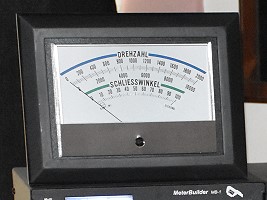 |
| MB-1 Digital Sampling Wattmeter: The MeterBuilder MB-1 is a digital sampling wattmeter, most likely the most versatile wattmeter you will ever encounter.. Several hundred times a second it samples the output waveform and measures and stores the instantaneous power level in both the forward and reverse directions. It then uses this to calculate the average power, tune power, SWR, and peak envelope power of the waveform, to name just a few things that it can measure. The wattmeter allows the operator to display results simultaneously in both analog and digital form. These can be displayed on the MB-1 itself or externally. I typically have the on-board LED displays configured to show Tune Power, SWR, Bargraph Full Scale Value, and Peak Envelope Power. Measured quantities may also be displayed on a large external analog meter and a large external digital display which features very large LED indicators and a digital LED bargraph. When I operate on AM, I use the MB-1 as a modulation meter, rather than an oscilloscope.. I simply read the CW carrier power on the meter, and then adjust the modulation until the indicated peak envelope power (PEP) is four times the carrier power. The modulation percentage is then 100%. |
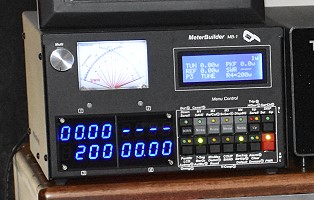 |
| Station Speaker: The output of the Timewave DSP-599zx audio filter is connected to a TenTec speaker. The speaker is mounted at ear level so that it can easily be heard. |
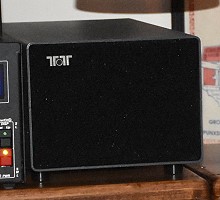 |
| Large LED and Bargraph Readout for MB-1: Any quantity measured by the MeterBuilder MB-1 can be displayed externally on this large digital display, which features two large LED displays on each side of a large LED digital bargraph display. Quantities that can be displayed here include forward and reverse tune power, average power, peak envelope power, SWR, and net forward power, to name just a few. All of these quantities can also be displayed on the MB-1 itself or in analog form on a large 6" analog meter. I normally use the LED bargraph in the middle (not lit in the photo) to show forward tune power, and the left LED display to show what value is represented by full scale on the bargraph. In this mode the bargraph is particularly useful for tuning up. It is so large I can see it even without my glasses. I also use the bargraph when adjusting the antenna tuner. When set to read SWR, I simply adjust the tuner until all of the segments are extinguished. |
 |
| Leather Pencil/Pen Holder: I use a leather pen and pencil holder that I got from The Elegant Office. An extravagance, but I got some money as a gift and decided to get something elegant that would always remind me of the person who gave me the gift. |
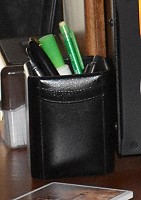 |
| Palstar AT4K 2.5kW Antenna Tuner: I use an AT4K antenna tuner made by Palstar to match my antennas to all of my transmitters. The antenna tuner also allows me to switch to any antenna without changing any cable connections, or to bypass the tuner completely.. This Palstar tuner easily handles 1300W on 160m. It has 6kV capacitors and a massive roller inductor (not toroidal inductors) that is silver plated and rated at 10A. I have had no trouble with it whatsoever. It also features a peak reading wattmeter rated at either 300W or 3000W full scale. This internal wattmeter is a wonderful adjunct to the MB-1 wattmeter. |
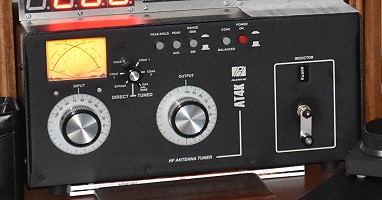 |
| 6x2 Superheterodyne Receiver: The 6x2 receiver is my pride and joy. It is a new 6 tube superheterodyne receiver for the 80m and 40m bands, designed and built by me. The receiver features a crystal filter, and when combined with the Timewave audio filter it makes for a great receiver! There is real satisfaction when you complete a QSO using gear that you have designed and built yourself, especially when that gear glows with the warmth of vacuum tubes. The 6x2 receiver is actually more stable than the Hallicrafters SX-96 receiver that I have elsewhere in the station. I typically use the 6x2 receiver with my digital VFO/6AG7/6146 transmitter system or with the digital VFO and my Johnson Viking Ranger. Combined with my automatic T/R system these combinations are almost as easy to operate as the TenTec Jupiter transceiver. |
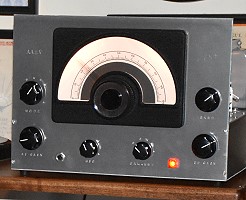 |
| Timewave DSP-599zx Digital Audio Filter: The Timewave DSP-599zx digital audio filter is the finest audio filter on the market. This incredible filter has settings for CW, phone, and data modes. The filter not only has bandpass, highpass, lowpass, and notch modes, but also features very effective digital noise reduction. All settings are displayed on an alphanumeric display and there are six memories that can be used to store the operator's favorite settings. Filter frequencies and bandwidths can be precisely set within 5Hz and the minimum bandwidth in the CW mode is a remarkable 10Hz. (I have actually used that narrow setting several times to dig weak signals out of the noise on 160m.) |
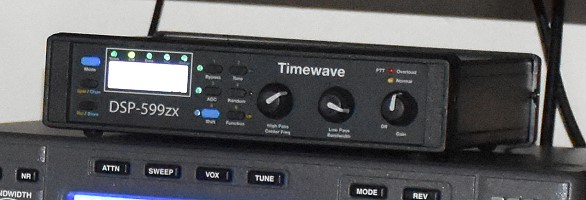 |
| TenTec Jupiter DSP Transceiver: The "modern" rig in my station is a TenTec. Jupiter These are unfortunately no longer in production, and I plan to keep mine as long as possible. The transceiver uses DSP in the IF and I love all of the options that this gives me. It can operate AM, FM, SSB, CW, and data modes. The bandwidth is variable via a dedicated knob from 8kHz (excellent for AM and SWL listening) all the way down to 150Hz (excellent for CW). There are so many settings for the bandwidth that it is essentially continuously variable. The large display shows everything at a glance and the frequency can be set and read within 1Hz, which, though not really useful for normal operating, is very useful for test purposes. My Jupiter also has a built in antenna tuner. I don't use this in normal operation, since I have the Palstar antenna tuner, but I do use the internal antenna tuner when driving the Ameritron AL-572 amplifier. In actual practice, I use the Jupiter mostly as a receiver with my other homebrew and vintage transmitters. About the only time I use the Jupiter as a transceiver is for tune-up purposes and on 160m. |
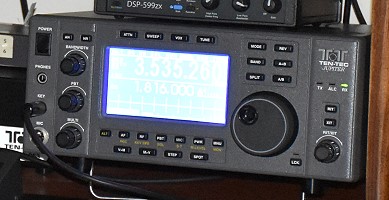 |
| Remote Control for TenTec Jupiter Transceiver: The TenTec Jupiter has a remote control that contains an extra tuning knob, numeric keys for direct frequency entry, and three function buttons. The extra tuning knob allows me to tune the Jupiter with my left hand without reaching across in front of me, and the numeric keys are an obvious advantage. The function keys allow me to alter a variety of things remotely, such as frequency step and mode. The remote control essentially allows for ambidextrous operation of the Jupiter. |
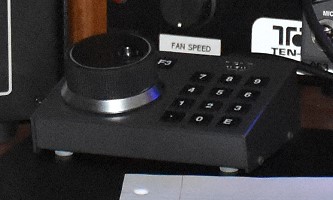 |
| Leather Desk Pad: I like to copy down everything on CW 100%, and I use a leather desk pad to provide a good, sound writing surface. Leather pads are expensive, but once you use one you will never go back to anything else. Large leather pads like the one in the photo can be obtained from The Elegant Office. |
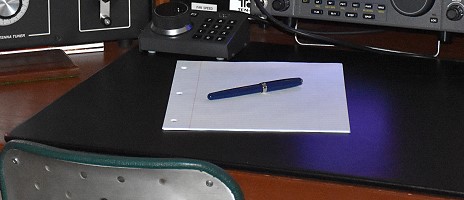 |
| Parker Fountain Pen: Some people collect mugs, some collect porcelain, and some collect little metal spoons. But I have always loved fountain pens, ever since I used them in grade school. I now have quite a collection, and use them when copying CW. I rotate through the collection, changing to a new pen every day, and I even keep my code speed down so I can copy down everything on paper. To me, the writing is half the fun of working CW. The pen on the photo is a Parker Sonnet. |
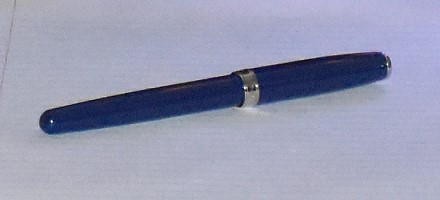 |
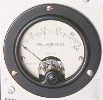 Back to Dr. Greg Latta's
Electrical Engineering and Amateur Radio Pages
Back to Dr. Greg Latta's
Electrical Engineering and Amateur Radio Pages
 If you have any questions or
comments, you can send E-Mail to Dr. Greg Latta at
glatta@frostburg.edu
If you have any questions or
comments, you can send E-Mail to Dr. Greg Latta at
glatta@frostburg.edu